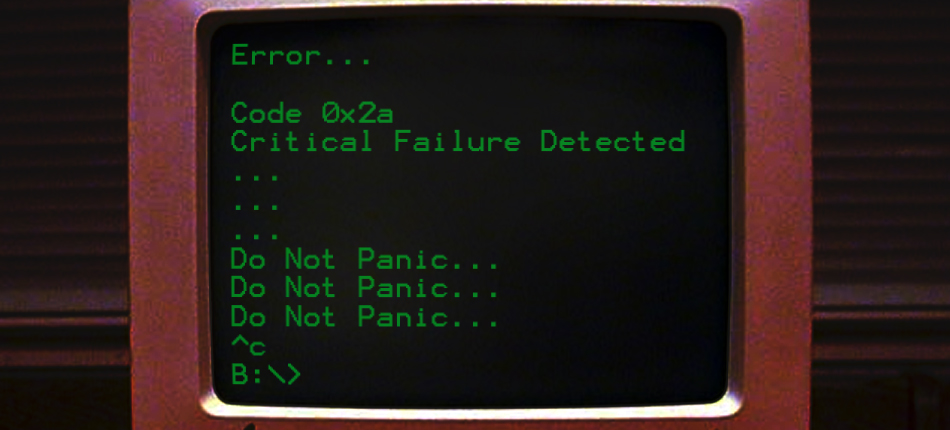Tag: Autcraft (Page 3 of 3)
I was recently interviewed by a reporter from the New Scientist who wrote a piece on our paper, “Will I always be not social?”: Re-Conceptualizing Sociality in the Context of a Minecraft Community for Autism, that I will be presenting on May 9 for CHI 2016.
Minecraft is helping children with autism make new friends: https://t.co/jCRTOSdY6L pic.twitter.com/tYyutgd38T
— New Scientist (@newscientist) April 28, 2016
We were also covered by “Don’t Hate the Geek” in their article Minecraft Server for Autistic Gamers on May 2, 2016!
Want to find out more? Please see our full paper that has been accepted to CHI 2016. Full citation and link to the pdf below:
POST LAST UPDATED: May 2, 2016.
Related Posts:
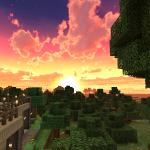
A Place to Play

“Autsome”: Fostering an Autistic Identity in an Online Minecraft Community for Youth with Autism

CHI 2019 Honorable Mention
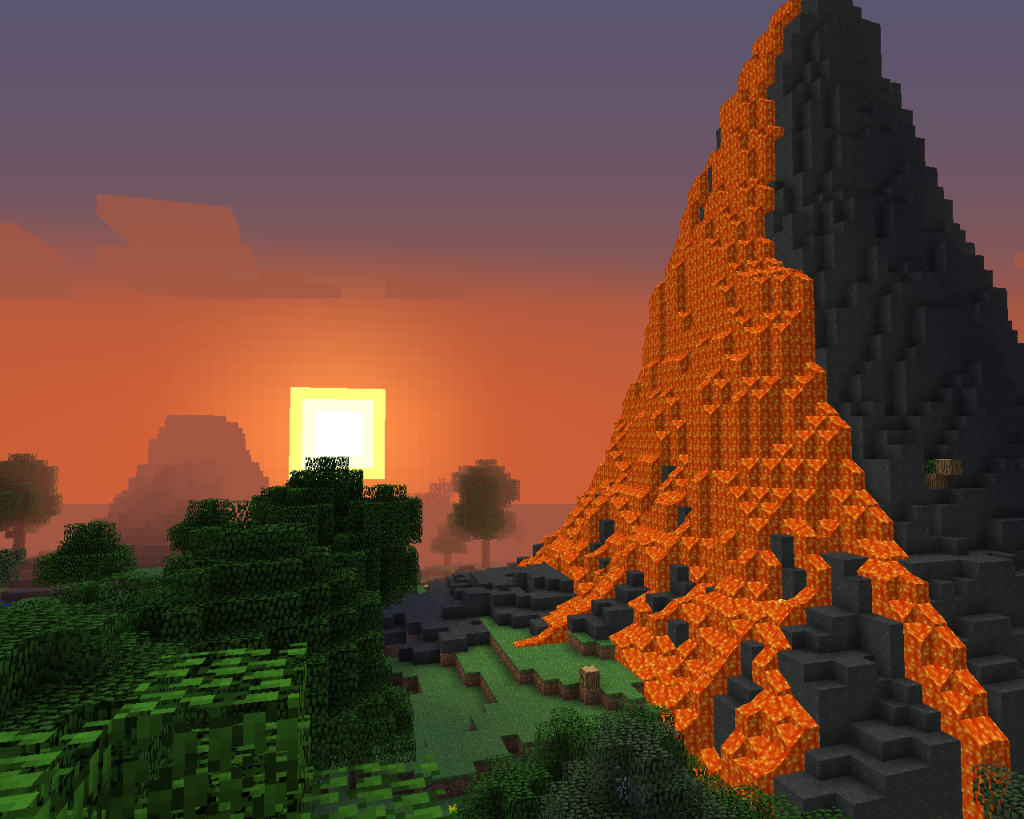
“Will I always be not social?”: Re-Conceptualizing Sociality in the Context of a Minecraft Community for Autism
Preview: Members of the Autcraft community for children with autism and their allies use a variety of social media platform, centered around Minecraft. The community’s use of various technologies facilitates the expansion of how members can socialize with one another, giving them opportunity to explore their own sociality, expand how they would like to be able to socialize, and deepen their connection with other members of the Autcraft community.
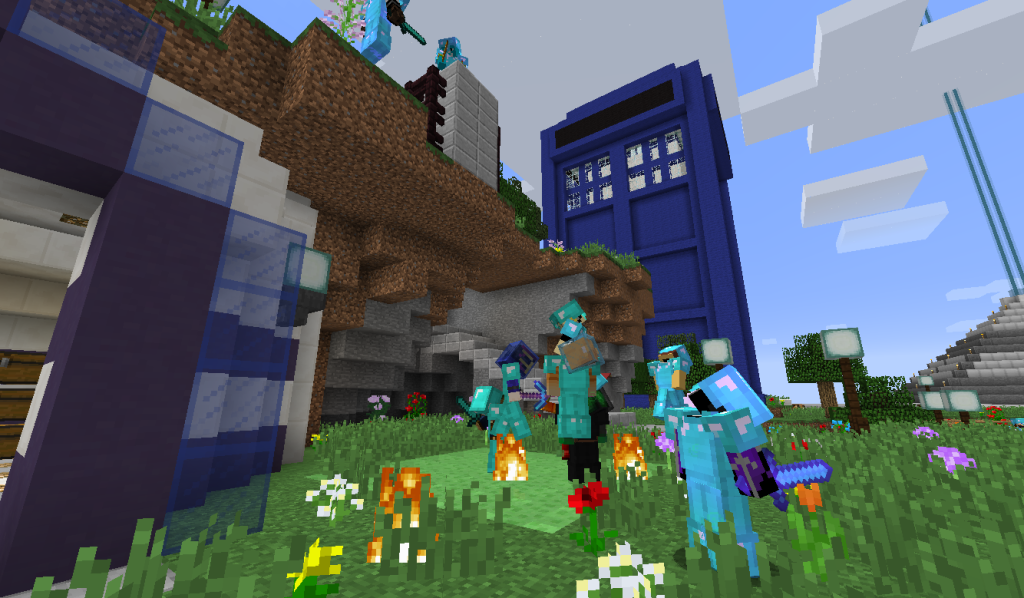
Autcraft community members playing a game together.
“I love being a member of the [Autcraft] community and love spending time with my ‘family’ here. … A place I was accepted for … just being ‘different’ than others.”
If a child finds face-to-face conversations challenging and feels isolated from their peers at school, where can they go to make friends? Online communities have the potential to support social interaction for those who find in-person communication challenging, such as children with autism. Unfortunately, online communities come with their own set of problems – cyberbullying is particularly troubling. We studied how one online community, Autcraft, through a variety of social media platforms, practices and defines how they are social.
Autcraft is a Minecraft community for children with autism and their allies run by parent volunteers. The goal of the Autcraft community is to have a safe space for children with autism to play Minecraft free from harassment and bullying (for more information visit the Autcraft website). As part of our study, I have been conducting an on-going ethnography within the community (see our paper for details). This study included analysis of activity within the Minecraft server, forums, website, Twitter, Facebook group, YouTube, and Twitch.
Our analysis demonstrates how members of the Autcraft community search for, practice, and define sociality. These results indicate more broadly how people may increasingly find new ways to express themselves and create a sense of community as emergent forms of media change the nature of our social landscape. Our exploration of Autcraft adds to a growing body of work about social platforms by showing how flexible, multimodal communications not only “keep the game going” but also can have profound effects for self-expression and feelings of social belonging.
Autcraft community members engage in the following:
- Searching For and Finding Community. Minecraft serves as a bridge or means of entry for members of this community. The game plays a key role, coupled with other forms of social media, in supporting children who are particularly known to struggle with finding social support. Autcraft—including the game, forums, Facebook page, and community-related videos—helps community members to not feel “alone.” Much like for other youth online, Autcraft members describe “hanging out” with their friends in Minecraft. Although they may not be meeting in person, members consider these relationships to be meaningful friendships. Autcraft, by its very nature of blending social interaction with strict rules of behavior and appealing game mechanics, comes together to form a space of cohesion, not difference, and of support, not scorn.
- Defining Sociality and Community. Although Autcraft community members often seek out social relationships through Autcraft as an augment to in-person relationships, some do not wish to seek out these in-person friendships. Those who prefer the majority of their socializing to occur online struggle with what it means to be “social.” Acceptance is a cornerstone to making being “different” more tolerable and reducing the social isolation and loneliness that frequently surrounds difference.
- Practicing Sociality. In practicing their social behavior, social connections are formed and maintained through a variety of media technologies, allowing members to use communicative practices best suited for them, both as individuals and as a group. The community sets the stage for sociality by encouraging members to “Be Kind, Be Respectful, Be Responsible.” On an individual level, Autcraft provides powerful common ground for players, a key foundation to many friendships. Not only do those who join the community share a common interest in Minecraft, they also all have claimed to be either an ally of, or someone with, autism. This is a requirement the community regulates carefully. These two components of the community help lay the groundwork for friendship because they represent part of a person’s shared interest.
By using various platforms, members of the Autcraft community are able to form deeper friendships with one another, if so desired. Being able to foster these relationships across the myriad platforms creates cohesion in the community. Two members may meet through an advertisement on the forums for builders, build a project together, and then go on to create YouTube videos together of the experience. This facilitates the expansion of how members can socialize with one another, giving them opportunity to explore their own sociality, expand how they would like to be able to socialize, and deepen their connection with other members of the Autcraft community.
For more details about our methods and findings, please see our full paper that has been accepted to CHI 2016 (to appear in May 2016). Full citation and link to the pdf below:
Ringland, K.E., Wolf, C.T., Faucett, H., Dombrowski, L., and Hayes, G.R. “’Will I always not be social?’: Re-Conceptualizing Sociality in the Context of a Minecraft Community for Autism”. Proceedings of the 2016 ACM CHI Conference on Human Factors in Computing Systems, ACM (2016). [Acceptance Rate: 23.4%] [PDF]
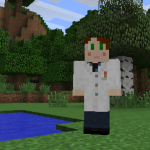 Acknowledgements: We thank the members of Autcraft for the warm welcome to their community. We would like to thank members of LUCI for their feedback on this paper. We would also like to thank Robert and Barbara Kleist for their support. This work is covered by human subjects protocol #2014-1079 at the University of California, Irvine.
Acknowledgements: We thank the members of Autcraft for the warm welcome to their community. We would like to thank members of LUCI for their feedback on this paper. We would also like to thank Robert and Barbara Kleist for their support. This work is covered by human subjects protocol #2014-1079 at the University of California, Irvine.
Related Posts:

A Place to Play

“Autsome”: Fostering an Autistic Identity in an Online Minecraft Community for Youth with Autism

CHI 2019 Honorable Mention
My intention with these blog posts is to have a sort of informal record of my time spent in Autcraft. They will be my beginnings, in a way, of creating my overall narrative of my experience. I will be creating much more formal documentation in the form of conference papers and journal articles, but here I want to create a space that is more open to dialogue and discussion. I also want the community to know that I am completely open and willing to share my thoughts and findings as much as I want to hear the thoughts of those in the community. My hope is to be able to tell the story of Autcraft and to be able to, through technology, expand on what it has given the autism community if I can.
My first week in the Autcraft community has been an extremely humbling experience. As I made my first timid steps into the unknown, I was greeted with open arms. A good number of people have given me encouragement, offered to help, welcomed me and offered friendship, and thanked me. I feel like I should be the one thanking every single member of the Autcraft community for allowing me to be among them.
I feel like I have accomplished a lot in the few hours I have played over the last week: I’ve built a modest office, explored many different areas, gone mining, died in lava, played Hide and Seek with other players, marveled at all the amazing things other players have built, played Paint Ball with other players, and died falling from a giant pink pony. All and all, a very busy, but successful week.
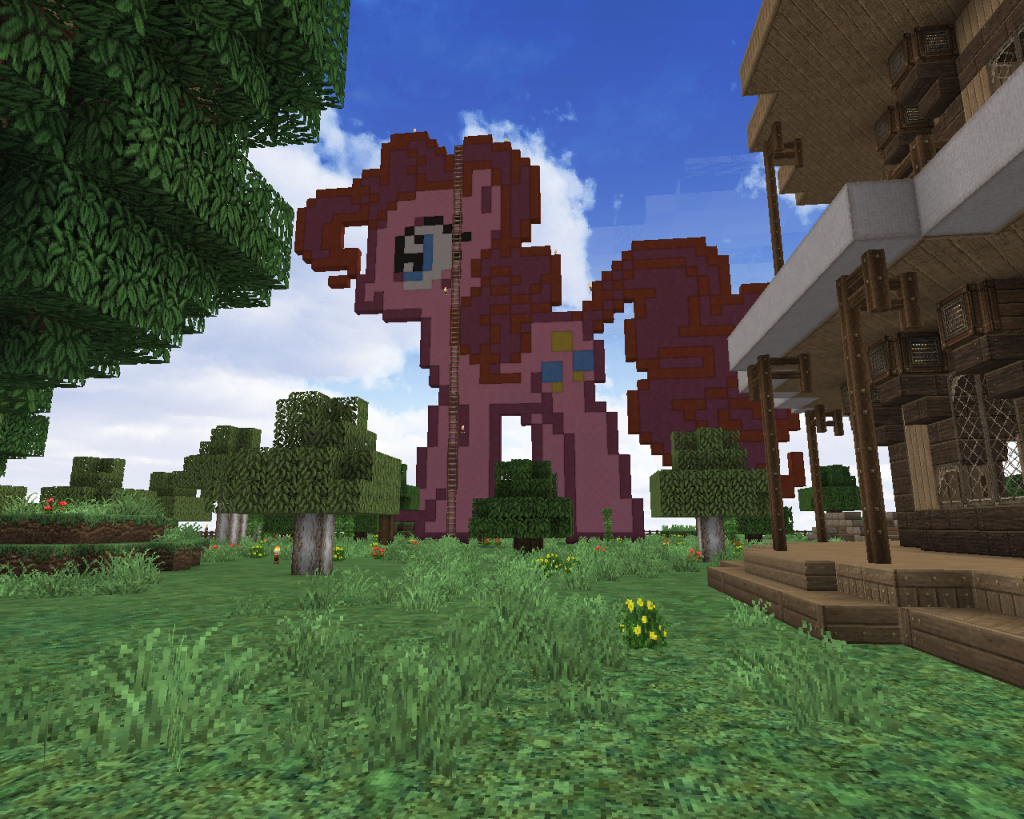
Fell off from the top of a giant pink pony and died. Admittedly a first for me.
I have been struck by the many different ways in which players communicate in Autcraft. There is text chat, but there is so much more. Players also communicate via their characters (how they look and through their movements), via their constructions, via signs littered throughout the world, and more. I am sure those that have a limited understanding of autism would be very surprised to hear that these players are communicating at all. And while I am still in the very early stages of my research, I can assure anyone reading this that these players are communicating- in a varied and rich format.
I will close with that for this week. Please stay tuned and feel free to email me at kringlan [at] uci [dot] edu with any questions about my work. Thanks and keep on building!
